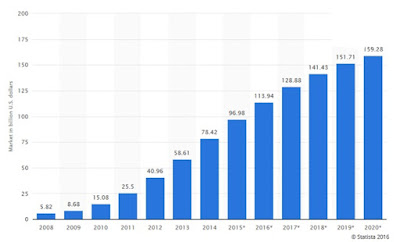Twitter Feed
Stateless Computing
A few days ago I read a review of Merrill Lynch’s Jeffrey Birnbaum LinuxWorld keynote on stateless computing. “With stateless computing, users’ settings and data are automatically saved to the…
Cloud Services
38% of 456 business technology professionals in a Information Week survey indicated that they currently use or will consider using services from a cloud provider. This seems much betterthan the…
Amazon, Elastra and the New Enterprise Data Center
Last week Amazon made an investment into Elastra. Some see this as Amazon’s enterprise play. Others see it as move towards the viability of private clouds. I see it as…
Microsoft Midori
Last week word got out that Microsoft’s new research project codenamed Midori. According to Information Week “the Midori system is being called Microsoft’s first cloud-based OS, and it could one…
Dell Trademarking Cloud Computing
There has been quite a bit of chatter lately over Dell’s attempt to patent “cloud computing”. Last week, the US Patent and Trade Office put an end to those aspirations…
Rob Enderle Cautions on Cloud Computing
Words of caution from Rob Enderle in “The Real Truth and Technology and IT”: “The key to success in the cloud will be keeping solutions simple, plus understanding and mitigating…
3 Important Point for Federal Government Cloud Computing
Point 1: In May, Verizon and AT&T were awarded a DHS task order for just under $1B to provide telecommunications services to the department. Verizon won the lead provider’s spot…
A Cloud Methodology
Although this was published in June, I just saw it and felt it was to good not to repeat: A Methodology for Cloud Computing Architecture Peel off the applications individually,…
IBM Invests Nearly $400M on Cloud Computing Centers
In a press release last week, IBM says that it will spend $360 million to build its most sophisticated, state-of-the-art data center at its facility in Research Triangle Park (RTP),…
Cloud Computing and the NCOIC
According to their website, The Network Centric Operations Industry Consortium (NCOIC) has scheduled a session on cloud computing at their upcoming plenary session in September. In case you haven’t heard…
- Enable cloud service arbitrage based on cost, performance or operational need;
- Help companies migrate operations to the cloud and assist with staff augmentation and training;
- Provide cloud service auditing and SLA monitoring services;
- Help in focusing and managing organizational cloud service demand;
- Provided toolsets to assist in the migration and integration of enterprise applications; and
- Help in change management and the selection and integration of other managed services.
By automating and operationalizing the governance of cloud services, CSBs can efficiently multi-source services and augment them with third party metering and monitoring. Using CSBs, organizations also accelerate their transition to hybrid IT models. This marketplace is typically segmented type of services: cloud brokerage and cloud brokerage enablement, wherein cloud brokerage enablement is further segmented into internal and external brokers. When used internally, cloud enablement platforms helps enterprises adopt the new hybrid IT and multi-sourced operating model. By building organic expertise, companies can personalize IT service consumption and unify
IT service delivery through the use of a corporate self-service store, a dynamic service marketplace, and continuous delivery. This centralized, supply chain approach unifies the order, execution, and management of multi-sourced solutions across legacy and cloud resources, by centrally delegating and tracking execution.
(This post was brought to you by IBM Global Technology Services. For more content like this, visit Point B and Beyond.)
( Thank you. If you enjoyed this article, get free updates by email or RSS – © Copyright Kevin L. Jackson 2016)
Cloud Computing
- CPUcoin Expands CPU/GPU Power Sharing with Cudo Ventures Enterprise Network Partnership
- CPUcoin Expands CPU/GPU Power Sharing with Cudo Ventures Enterprise Network Partnership
- Route1 Announces Q2 2019 Financial Results
- CPUcoin Expands CPU/GPU Power Sharing with Cudo Ventures Enterprise Network Partnership
- ChannelAdvisor to Present at the D.A. Davidson 18th Annual Technology Conference
Cybersecurity
- Route1 Announces Q2 2019 Financial Results
- FIRST US BANCSHARES, INC. DECLARES CASH DIVIDEND
- Business Continuity Management Planning Solution Market is Expected to Grow ~ US$ 1.6 Bn by the end of 2029 - PMR
- Atos delivers Quantum-Learning-as-a-Service to Xofia to enable artificial intelligence solutions
- New Ares IoT Botnet discovered on Android OS based Set-Top Boxes



